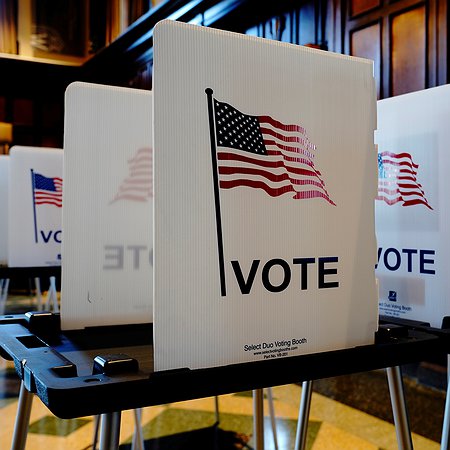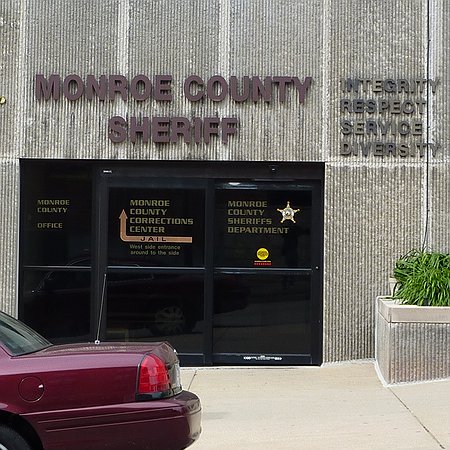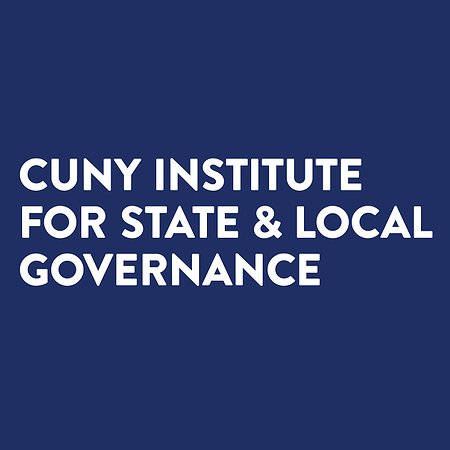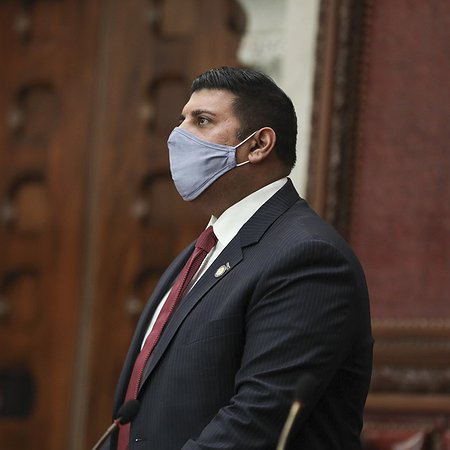Manhattan Institute Article Spreads Misinformation about New York Reforms
This piece from the Manhattan Institute cites multiple clearly discredited stories in support of the false proposition that modest reforms in New York are to blame for causing widespread harm in New York City.
The Briefing
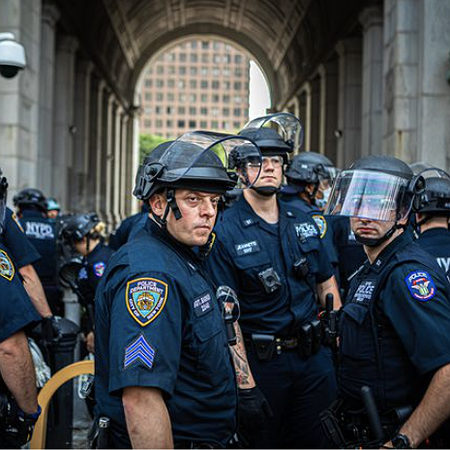
This piece from the Manhattan Institute cites multiple clearly discredited stories in support of the false proposition that modest reforms in New York are to blame for causing widespread harm in New York City. It cites a study that incorrectly claims the NYPD was defunded by $1 billion in June 2020, relies on the NYPD account of the case of a Bronx teenager that was fully discredited by video footage, misrepresents the impact of legislative changes around pretrial policies, and uses racist and denigrating tropes to stigmatize children (“gang members” and the “young and violent”) and those experiencing mental illness.
Deeper Dive
The Lie: This piece specifically cites the case of a 16-year-old charged with a shooting in the Bronx to support its position that reforms have run amok.
The Truth: Rather than supporting the anti-reform claims of this piece, this case is a clear example of the media and officials, including Mayor Eric Adams, incredulously and solely relying on police accounts of incidents in which police are involved. Last week, shortly after the publication of this piece, a judge determined that video footage thoroughly discredited the NYPD’s claims about the January events.
The widely-printed account of what happened to the young person in the photo was that this teenager who shot a police officer outrageously walked free because of lax bail laws. Papers reported that the NYPD responded to an “unruly crowd” where the teen — a “gang member” — repeatedly refused to comply with orders to show his hands, resulting in a “battle” with cops that ended with the teen firing the gun he was holding, shooting an officer and himself. One article coolly described the bullet as merely “passing through” a “gang member” on its way to injuring a police officer.
This piece repeats this version, claiming that the teen “shot a cop who was dispersing a disruptive crowd.” But last week, Judge Naita Semaj determined that NYPD Officer Taulant Gjonbalaj and his colleagues lied in this case, finding that the “incredible…self serving” police testimony “had no value.” She continued: “There was absolutely zero reason for any of those officers to approach this individual… He literally does everything you tell your child to do when they’re approached by cops,.” Judge Semaj noted that the teen kept his hands up, recorded, and answered all questions. The gun discharged when police grabbed it while illegally assaulting him, causing it to fire into the teen’s groin. Judge Semaj also determined that the teenager was the only person seriously injured.
Bail reform had nothing to do with this case, and that was clear from the outset. Bail was set at an incredibly high rate, $250,000, and the teen was incarcerated for more than a week with a gunshot wound until his family was able to cobble together funds to post bond. Proof that police lied only further established the need for the very reforms attacked here.
The Lie: “Why are cops and babies getting shot? Bad policy.”
The Truth: Bad policy, in this context, refers to modest criminal legal reforms. This inflammatory statement is a lie that has been promulgated by media and officials, and it is simply false. There was absolutely no connection to reform in the tragic shooting deaths of NYPD officers Wilbert Mora and Jason Rivera, with the man who shot them during a mental health crisis not having criminal legal contact for 19 years (he was killed by a third officer). In the shocking case of the 11-month-old who was shot, but survived, no suspect has been named and any purported connection to reform is speculative and baseless at best. While these tragic stories and others are a source of fear, sadness, and legitimate concern, they are being cynically exploited to advance an anti-reform agenda.
The Lie: Raise the Age is to blame for an increase in gun violence.
The Truth: Adults and children accused of gun possession are all eligible to be detained pre-trial. Possession of a loaded firearm, which is classified as a violent felony charge in New York under 265.03, and allegations of other violent felonies remain eligible to have bail set. No pre-trial reforms in New York changed this fact.
For all children aged 13-17, as prior to 2020, certain serious or violent-classified charges are eligible to remain in adult criminal court. These cases may be removed from adult criminal court and heard in family court either on consent of a prosecutor or by the judge in recognition of the age of the accused person and widely accepted science around juvenile brain development (Raise the Age added 16 and 17-year-olds to this group). Importantly, when these cases are heard in family court, judges there actually have an even greater ability to detain the children who appear before them. Family court judges also have a wide range of pre-trial monitoring, curfew, and programming mandates to impose on the accused child.
The purpose of Raise the Age legislation—which is often criticized alongside reforms to pre-trial practices such as bail—was to reflect widely accepted data and scientific developments related to juvenile brain development and the damaging effects of adult criminal proceedings and sentencing on children. Not only was New York late to a nationwide policy trend reflecting these developments, but the changes have been modest, with significant carve-outs and a maximum age (18 years) that is far lower than widely accepted age of brain maturation (25 years). Gun cases and other violent felony offenses are not automatically removed to family court. To suggest that New York’s criminal legal policies are insufficiently punitive for children and young adults is simply not grounded in fact or practice.
Incarceration not only fails to “rehabilitate” people subjected to confinement but is also independently deleterious to their wellbeing, health, and future prospects. This is particularly true for children and young people. In a 2017 study by the American Academy of Pediatrics, “Cumulative incarceration duration during adolescence and early adulthood is independently associated with worse physical and mental health later in adulthood… For the 1.3 million children and adolescents arrested in the United States each year, incarceration may systemically degrade their healthy development.” The study’s findings affirmed the Academy’s 2011 report, which urgently called for a reduction in the number of incarcerated youth.
Reactionary calls to jail children to solve the issue of gun violence amount to dangerous scapegoating for societal failures, even when children are legitimately found to have caused harm. There are many reasons why people, including minors, choose to carry guns. In 2018 and 2019, the Center for Court Innovation interviewed 330 young people in New York City about guns, violence, and proposed solutions to violence. 88 percent had a family member or friend who had been shot and 81% had been shot or shot at. Most reported being harassed for small infractions or feared being shot by the police. Nearly nine out of ten had at some point carried a gun, citing multiple factors for doing so.
To automatically sentence them to 3.5 years in prison for this action—as is required when prosecutors charge people for possession as Class C violent felonies—fails to address any of the underlying issues at play. This is made particularly clear by the stark racial disparities in gun enforcement within a nation that enshrines gun ownership for white people, including in states with high murder rates. In New York City, 97% of people currently incarcerated on a top charge of possessing, not firing, a gun are non-white.
The Lie: “Gangs immediately exploited the law, shifting more gun-carrying to members under 18, whose cases would be heard in family court instead of criminal court.”
The Truth: There is no factual basis for this fearmongering claim, which has been repeated by multiple officials without proof. There is also a distinctly racist and prejudicial element to the use of “gang members” as well as “young and violent” and “mentally unstable young men” in this piece, phrases that are reminiscent of the use of the “superpredator” label in nearly identical contexts in the 1990s.
Furthermore, the NYPD and the Mayor have themselves announced more aggressive stops and searches in the name of gun enforcement, particularly in young people. Reporting that police have, in fact, targeted more people for enforcement as they announced they would is not proof of a change in the behavior of New Yorkers, particularly not one that can be attributed to modest pre-trial reforms.
The Lie: “Unstable and violent individuals are flowing onto New York City streets.”
The Truth: This is a dehumanizing and false way to discuss the actual issue of people being criminalized for exhibiting symptoms of mental health disorders. The population in City jails is already at pre-reform levels, and increased incarceration does not correlate with increased public safety. It is critical to identify the actual policy proposal being made here and in identical arguments being advanced elsewhere: Indefinite pre-trial incarceration, particularly for people experiencing mental illness.
The piece also uses the example of an unhoused man who had been released three months prior to assaulting two women. The New York Post article they cite to support this proposition not only falsely claims that the man could not have had bail set on the allegations involving the women, but fails to acknowledge the practical truth that low-level misdemeanor offenses do not—and should not—lead to indefinite detention. The default detention of people pre-trial as a mechanism to do anything but ensure their return to court amounts to a presumption of guilt rather than innocence.
A person’s repeated contact with the criminal legal system is a sign of the system’s failure, not a sign of the need for increased contact. This has been covered extensively in past Justice Not Fear Briefings.
In order to focus on the root causes of harm, we must avoid demonizing and hurting people who experience mental health issues. At least half of all people in United States prisons are estimated to experience mental illness. But they are also more likely to be impoverished and unhoused (roughly a third experience serious, untreated mental illness such as schizophrenia). People with mental illness are also significantly more likely to be the victims of violence and other harm.The response to people who continually experience the criminalization of their mental health symptoms should be to increase healthcare and meaningful access to services and resources, not to further incarcerate and punish.
The Department of Corrections is currently in violation of a court order which mandates basic healthcare access for incarcerated people after they were shown to have violated the constitution and the human rights of people in their custody. The case was brought by public defenders on behalf of people who had not received adequate healthcare during the COVID-19 crisis, but the problem far predates COVID. NYC has been renowned for its cruelty to the physically sick and people experiencing mental health issues.
The Manhattan Institute piece is correct that people experiencing mental illness are disproportionately jailed, but it reaches past obvious solutions to insist that more jail is the answer. In 1999, people experiencing mental illness in custody sued the Department of Corrections for its regular practice of releasing people with acute mental illness from jail at the end of their incarceration in the middle of the night with no resources and only $1.50 for a bus ride. The case was Brad H. v. City of New York and individuals who have a mental health diagnosis are now labeled “BRAD-H” by the DOC as a result. Yet since this case, the DOC has repeatedly refused to comply with even the most basic requirements to provide even a discharge plan and mental health referrals for people in their custody. They have been repeatedly sued for this failure and litigation is ongoing.
Roughly half of all incarcerated people in DOC custody are designated as BRAD-H, which is a sign of societal failures rather than proof of the efficacy of incarceration. Even more suffer from undiagnosed mental illnesses, and these issues often become worse while they are neglected, traumatized, and stigmatized through incarceration. Further incarceration of people who are experiencing mental health crises is neither humane nor effective, and the indefinite detention of this population is unconstitutional.
The Lie: Less is More is responsible for crime.
The Truth: “Less is More” legislation only went into effect on March 1, 2022, and marks a small but impactful change in the way that formerly incarcerated people are treated while being supervised on parole. Supporters of the legislation, which aimed to curb re-incarceration for “technical” parole violations such as being late for a curfew, included county district attorneys, sheriffs, and former parole officers, who argued that “the old system was overly punitive and the violation hearing process a bureaucratic mess that often trapped people in jail for months.”
The effects of the previous system were stark: New York sent more people back to jail on these violations than any other state, often undoing progress in their mental and physical health. Black and Latinx people were also far more likely than their white counterparts to be jailed on these grounds. In the last year and a half, four people incarcerated on technical parole violations were killed in City jails: In April 2020, Michael Tyson, 53, and Raymond Rivera, 55, both died in April 2020 after contracting COVID on Rikers; in 2021, Thomas Braunson III, 35, Richard Blake, 45, died while held on violations as well.
Providing expedited hearings, allowing non-criminal hearings to take place within a person’s community rather than in jail, and reducing the number of people jailed on minor allegations in no way has been tied to crime. Claims to the contrary are not only false, but they ignore the truth that jail itself presents a public safety hazard; the deleterious conditions of incarceration destabilize and traumatize people and their families. Providing resources to people while they are free is not a threat to safety.
The Lie: Crime is a result of reduced police funding.
The Truth: The NYPD was not defunded. Instead, its budget has steadily increased. The Department has also exceeded its allotted overtime budget by hundreds of millions of dollars every year for two decades, with historic overtime costs providing no measurable improvement in safety. Attempts to tie crime to defunded departments, like attempts to tie them to modest reforms, are simply false.
The Lie: Bail and other criminal legal reforms are to blame for crime.
The Truth: This is simply not a data-backed conclusion. The New York-specific reforms smeared by this piece, and by the anti-reform campaign more broadly, have not been connected to the nationwide rise in instances of harm.
Furthermore, although the Manhattan Institute piece focuses on New York City, statewide reforms have simply not resulted in statewide increases in crime rates. Westchester County, the wealthiest county in the State and the highest-taxed county in the country, has experienced double digit drops in all crime measures despite implementing the same policies as everywhere else in the State.
The Manhattan Institute cites its own broken-windows-style crime study to justify police saturation in “crime hot spots” — which are exclusively in majority Black and impoverished neighborhoods. The study cites falsehoods such as a defunded NYPD, and relies on police-reported statistics from heavily policed areas to draw conclusions about crime frequency. But buried in the study is also an acknowledgment that police have no definitive proof that their presence can be credited with any independent reduction in crime (“NYPD did not look to rigorous research to assess the impacts of its innovations, so it is impossible to tell to what degree its new policing strategies contributed to the crime drop.”) Indeed, certain crime rates have risen alongside NYPD headcount and budget.
In truth, the safest communities are not the ones with the most incarceration, they are the communities with the most resources.
